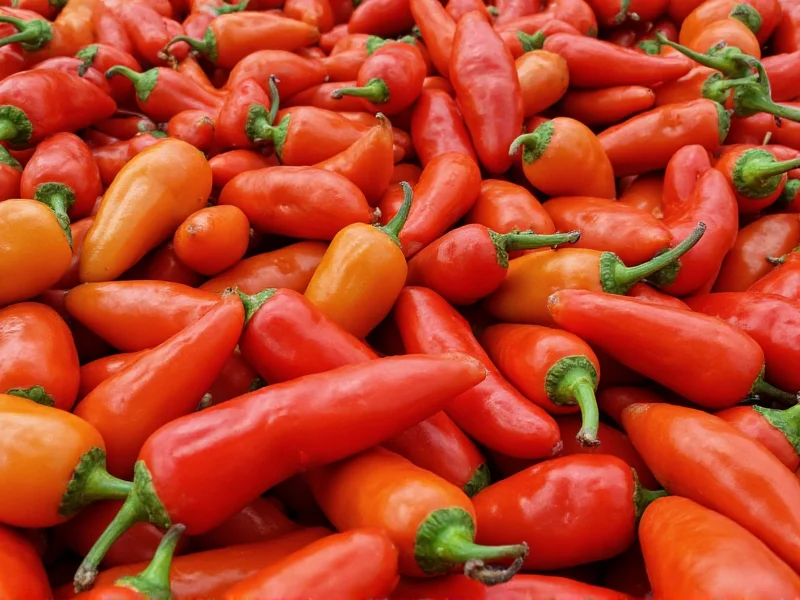Understanding where jalapeños fall on the Scoville scale helps home cooks and spice enthusiasts make informed decisions about their heat tolerance and recipe requirements. The Scoville scale, developed by pharmacist Wilbur Scoville in 1912, measures the concentration of capsaicinoids—the compounds responsible for a pepper's heat—in Scoville Heat Units.
What the Jalapeño Scoville Range Really Means
While the 2,500-8,000 SHU range represents the official measurement for jalapeños, several factors contribute to this wide spectrum:
- Genetic variation: Different jalapeño cultivars naturally produce varying heat levels
- Environmental stressors: Drought, temperature fluctuations, and soil conditions affect capsaicin production
- Ripeness: Red jalapeños (fully ripe) tend to be hotter than green ones
- Seed and membrane content: The white pith and seeds contain most of the capsaicin
Jalapeño Heat Compared to Other Common Peppers
Understanding jalapeño heat requires context. The following table shows where jalapeños fit within the broader pepper spectrum:
| Pepper Type | Scoville Heat Units (SHU) | Heat Level Comparison |
|---|---|---|
| Bell Pepper | 0 SHU | 0 times jalapeño heat |
| Poblano | 1,000-2,000 SHU | ½ to ⅔ jalapeño heat |
| Jalapeño | 2,500-8,000 SHU | Baseline |
| Serrano | 10,000-23,000 SHU | 2-4 times jalapeño heat |
| Habanero | 100,000-350,000 SHU | 15-40 times jalapeño heat |
| Ghost Pepper | 855,000-1,041,427 SHU | 100-300 times jalapeño heat |
Why Jalapeño Heat Varies So Dramatically
The significant range in jalapeño heat stems from multiple factors that influence capsaicin production. Research from New Mexico State University's Chile Pepper Institute shows that environmental stress directly correlates with increased heat levels. When jalapeño plants experience water stress or temperature extremes, they produce more capsaicin as a defense mechanism.
Interestingly, the same jalapeño plant can produce peppers with different heat levels. The first fruits of the season typically register lower on the Scoville scale, while later harvests often become progressively hotter. The position of the pepper on the plant also matters—those exposed to more direct sunlight generally develop higher capsaicin concentrations.
Practical Implications for Cooks and Consumers
Knowing the jalapeno scoville units range helps manage heat in culinary applications. For those sensitive to spice, removing the white membranes and seeds can reduce heat by up to 80%, as these parts contain the highest concentration of capsaicin.
Chefs often test jalapeños before adding them to dishes by tasting a small piece of the membrane. This practical approach accounts for the natural variation between individual peppers. When substituting jalapeños in recipes, consider that a mild jalapeño (2,500 SHU) provides less heat than a serrano's lowest range (10,000 SHU), while an extremely hot jalapeño (8,000 SHU) approaches the lower threshold of serrano heat.
Common Misconceptions About Jalapeño Heat
Several myths persist about jalapeño heat measurement. Contrary to popular belief, the number of striations (corking) on a jalapeño doesn't reliably indicate heat level, though it does suggest the pepper experienced some environmental stress during growth.
Another misconception involves color: while red jalapeños are fully ripe and often slightly hotter than green ones, this isn't always the case. Ripeness affects flavor complexity more than heat intensity. The notion that smaller jalapeños are always hotter also lacks scientific backing—size relates more to growing conditions than capsaicin concentration.
Measuring Heat Beyond the Scoville Scale
Modern laboratories now use High-Performance Liquid Chromatography (HPLC) to measure capsaicinoids precisely, providing more accurate heat measurements than the original subjective Scoville Organoleptic Test. This technology confirms the jalapeno pepper heat level range while revealing the specific capsaicin compounds present.
Despite these advances, the Scoville scale remains the standard reference for consumers due to its simplicity and historical use. When comparing jalapenos to other peppers scoville measurements provide the most accessible frame of reference for home cooks and spice enthusiasts alike.











 浙公网安备
33010002000092号
浙公网安备
33010002000092号 浙B2-20120091-4
浙B2-20120091-4